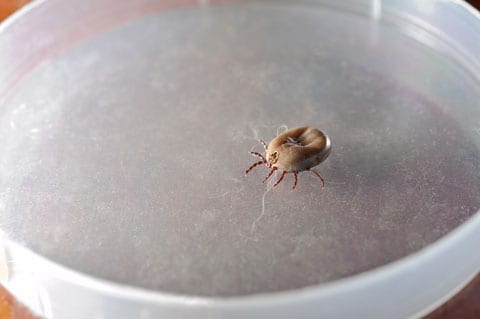With summer quickly approaching, I thought you might like some information on how to remove a tick. It’s very important to use a pair of fine-tipped tweezers or special tick removal instruments when attempting to remove these little pests. These special instruments will allow you to remove the tick without squeezing the tick body. This is very important as you do not want to crush the tick and force harmful bacteria to leave the tick and enter your pet’s bloodstream! Carefully follow the instructions below for tick removal success.
Grab the tick by the head or mouth parts right where they enter the skin. Do not grasp the tick by the body. Without jerking, pull firmly and steadily directly outward. Do not twist the tick as you are pulling. Using methods such as applying petroleum jelly, a hot match, or alcohol will NOT cause the tick to ‘back out.’ In fact, these irritants may cause the tick to deposit more disease-carrying saliva in the wound. After removing the tick, place it in a jar of alcohol to kill it. Ticks are NOT killed by flushing them down the toilet.
Clean the bite wound with a disinfectant. If you want to, apply a small amount of a triple antibiotic ointment. Wash your hands thoroughly.
Please do not use your fingers to remove or dispose of the tick. You do not want to come in contact with a potentially disease-carrying tick. Do NOT squash the tick with your fingers. The contents of the tick can transmit disease.
Once an embedded tick is physically removed, it is not unusual for a welt and skin reaction to happen. A little hydrocortisone spray will help ease the irritation, but it may take a week or more for healing to take place. In some cases, the tick bite may permanently scar leaving a hairless area. This skin irritation is due to a reaction to tick saliva. Do not be worried about the tick head staying in; it rarely happens.




0 Comments